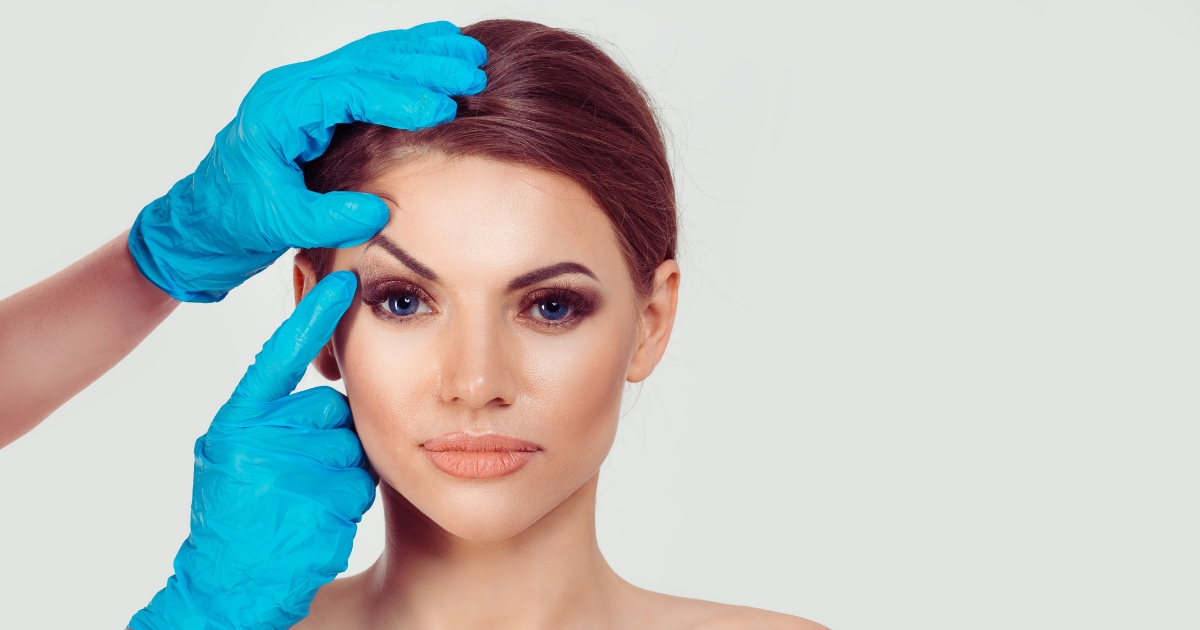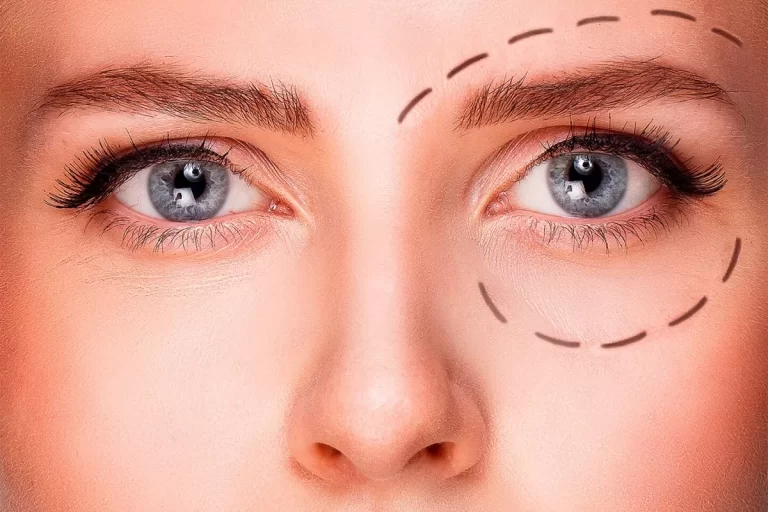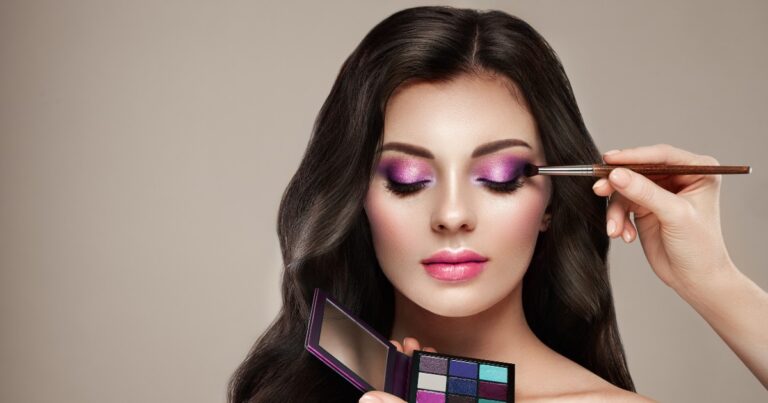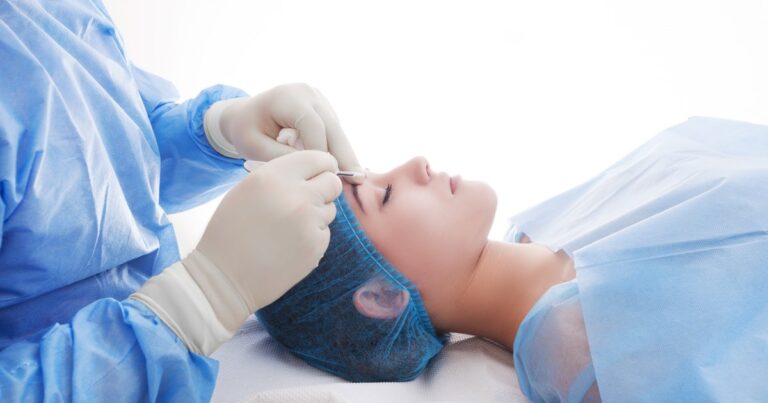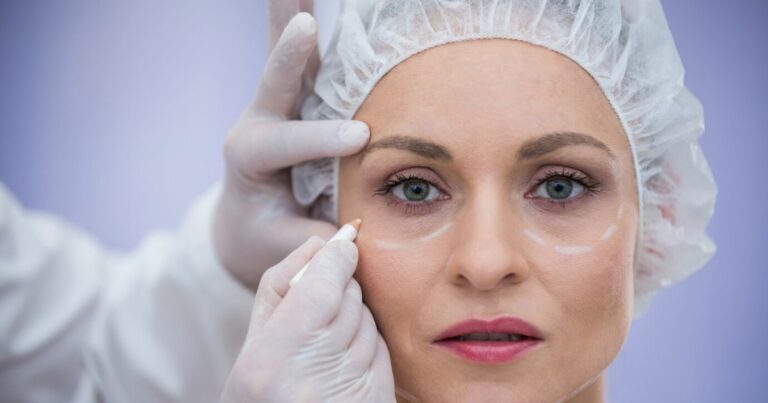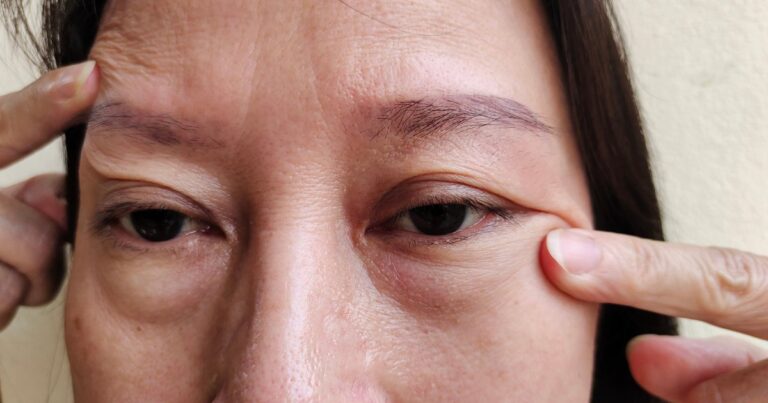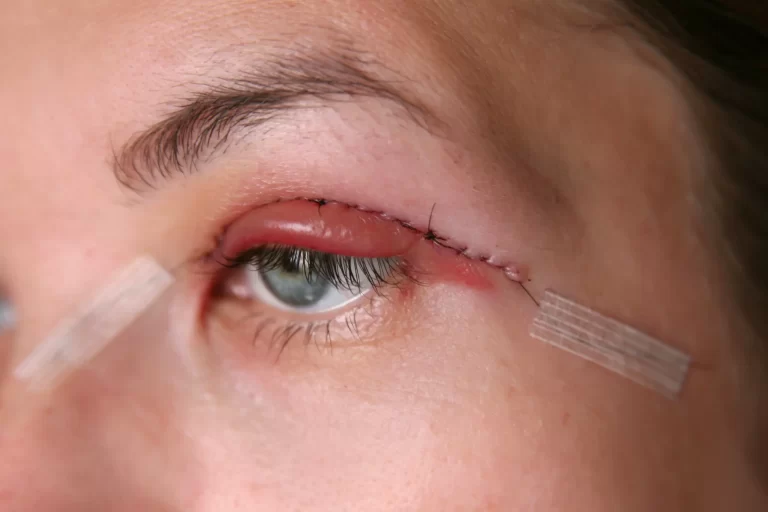Hooded eyelids, a common concern for many, often lead individuals to question, “Can you get surgery for hooded eyelids?” In this guide, we discuss blepharoplasty, the surgical solution for those seeking a rejuvenated eye appearance.
Causes of Hooded Eyelids: Genetics vs. Ageing
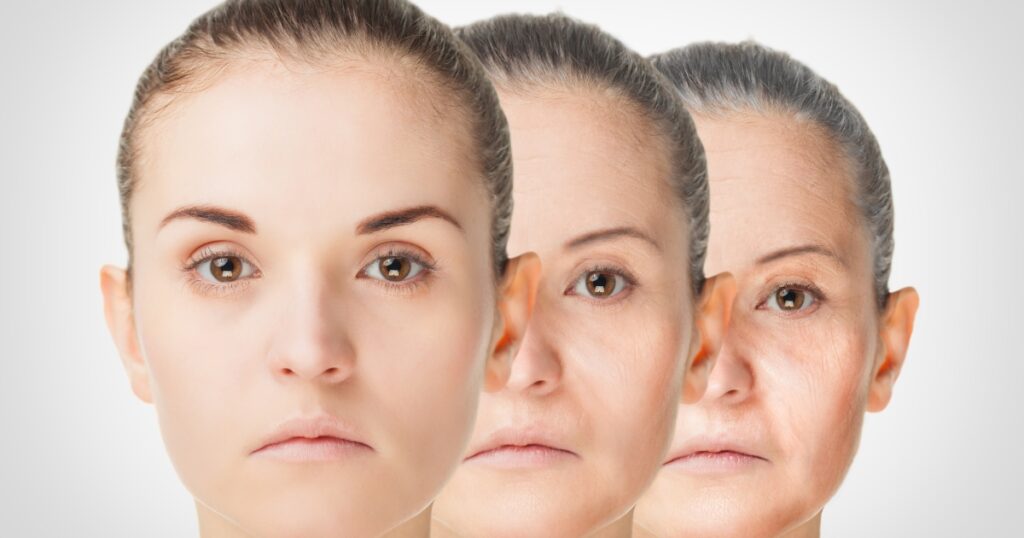
Hooded eyelids are characterised by an excess of skin that droops over the crease, causing the eyelid to appear smaller. While genetics play a significant role in determining eyelid structure, the ageing process can exacerbate the appearance of hooded eyes. Over time, the skin loses elasticity, leading to increased sagging and the formation of droopy eyelids.
| Factor | Description | Prevention/Treatment |
| Genetic Predisposition | An inherited trait from family members. | None, it’s a natural feature. |
| Ageing Process | Skin loses elasticity over time. | Anti-ageing skincare routines. |
| Sun Exposure | UV rays accelerates skin ageing. | Sunscreen and protective wear. |
| Lifestyle Factors | Smoking and poor skincare can hasten appearance. | Healthy lifestyle choices. |
| Hormonal Changes | Pregnancy and menopause can affect skin elasticity. | Hormone therapy. |
| Environmental Factors | Pollution can degrade skin quality. | Antioxidant-rich skincare. |
Understanding Blepharoplasty: The Surgical Solution
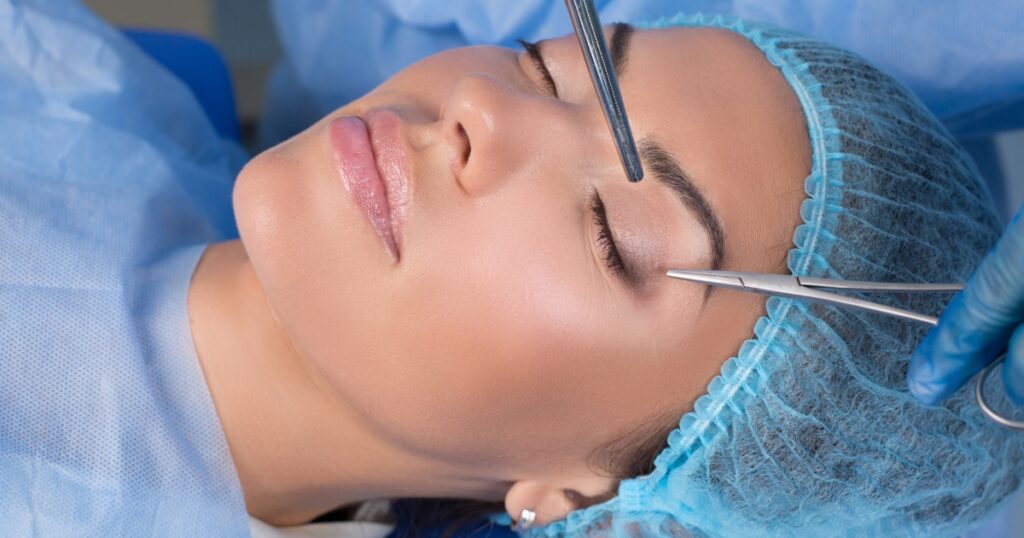
Blepharoplasty, commonly known as eyelid surgery, is a procedure designed to remove excess skin and fat from the eyelids. This surgery can be performed on both the lower and upper eyelids, depending on the patient’s needs. The primary goal is to rejuvenate the eyes and provide a more youthful appearance.
- Surgical Technique: Surgeons use precise techniques to ensure minimal scarring post-surgery.
- Anesthesia: The procedure is typically performed under local anaesthesia with sedation.
- Duration: A standard blepharoplasty can take between one to three hours.
- Incision Sites: Incisions are usually made within the natural creases of the eyelids.
- Fat Removal: Excess fat is carefully removed to prevent a hollowed appearance.
- Post-Surgery Appearance: Initial swelling and bruising are common but subside within a few weeks.
Benefits of Eyelid Surgery for Hooded Eyes
Eyelid surgery offers numerous benefits, from enhancing aesthetic appeal to improving vision obscured by drooping skin. The procedure can make the eyes appear larger, brighter, and more alert. Additionally, it can boost an individual’s confidence by providing a refreshed and rejuvenated appearance.
- Improved Vision: Removing excess skin can clear obstructions in the peripheral vision.
- Youthful Appearance: The procedure can take years off one’s appearance by addressing sagging skin.
- Long-lasting Results: The effects of blepharoplasty can last for many years.
- Enhanced Eye Makeup: A more defined eyelid crease allows for better makeup application.
- Reduced Eye Fatigue: Addressing drooping skin can alleviate strain and fatigue.
- Increased Self-Esteem: A refreshed appearance can boost self-confidence.
Potential Risks and Complications
Like all surgical procedures, blepharoplasty comes with its set of potential risks and complications. While rare, some patients may experience adverse reactions such as infection, scarring, or asymmetry. It’s essential to be aware of these risks and discuss them with a qualified surgeon.
| Risk | Description | How to Minimise |
| Infection | Can occur post-surgery. | Follow aftercare instructions. |
| Scarring | Visible scars may form. | Choose experienced surgeons. |
| Asymmetry | Uneven results between eyes. | Proper pre-surgery planning. |
| Dry Eyes | Irritation or dryness post-surgery. | Use prescribed eye drops. |
| Bleeding | During or after the procedure. | Follow the surgeon’s advice. |
| Vision Changes | Temporary or permanent changes in vision. | Choose reputable clinics. |
Preparing for Your Eyelid Surgery: Steps to Take
Proper preparation is crucial for a successful blepharoplasty. This includes following pre-operative instructions, setting realistic expectations, and ensuring optimal health before the procedure. A thorough consultation with the surgeon will provide a clear roadmap for preparation.
- Medical Evaluation: Undergo a comprehensive medical check-up to ensure you’re fit for surgery.
- Avoid Certain Medications: Blood-thinning medications and supplements should be avoided.
- No Smoking: Refrain from smoking at least a few weeks before and after the procedure.
- Arrange Transportation: Ensure you have someone to drive you home post-surgery.
- Set Up a Recovery Area: Prepare a comfortable space with essential items within easy reach.
- Follow Dietary Guidelines: Adhere to any dietary restrictions provided by the surgeon.
The Blepharoplasty Procedure: What to Expect
The blepharoplasty procedure is a meticulous process that requires precision and expertise. After administering anaesthesia, the surgeon makes incisions in the eyelids’ natural creases. Excess skin, muscle, and fat are then removed or repositioned to achieve the desired result.
- Consultation: The procedure begins with a detailed discussion about the patient’s goals.
- Marking the Eyelids: The surgeon marks the areas where incisions will be made.
- Administering Anesthesia: Local anaesthesia with sedation ensures patient comfort.
- Making the Incisions: Precise cuts are made to minimise visible scarring.
- Closing the Incisions: Sutures or skin adhesives are used to close the incisions.
- Immediate Aftercare: Cold compresses may be applied to reduce swelling.
Surgery for hooded eyelids: Recovery and Aftercare
Post-operative care is vital for a smooth eyelid recovery. Patients should expect some swelling, bruising, and discomfort initially. However, with proper care and following the surgeon’s instructions, these symptoms will subside, revealing the final results.
Here are some tips for a smooth healing process:
| Tip | Description | Why It’s Important |
| Cold Compresses | Reduces swelling and discomfort. | Speeds up recovery. |
| Elevate the Head | Minimises swelling during sleep. | Prevents fluid accumulation. |
| Avoid Strenuous Activities | Prevent complications. | Protects the surgical site. |
| Protect from Sunlight | Wear sunglasses outdoors. | Prevents scarring and damage. |
| Follow Medication Guidelines | Take meds and ointments as directed. | Ensures proper healing. |
| Attend Follow-up Appointments | Regular check-ups with the surgeon. | Addresses any concerns. |
Alternative Treatments to Surgery for Hooded Eyelids
While blepharoplasty is a popular solution for hooded eyelids, there are non-surgical alternatives available. These treatments can offer temporary relief or subtle enhancements without the need for incisions. They range from injectables to laser treatments, catering to various needs and preferences.
| Treatment | Description | Duration of Effects |
| Botox procedure | Lifts eyebrows to reduce hooding. | 3-6 months. |
| Fillers | Restore volume and provide a lift. | 6-18 months. |
| Laser Resurfacing | Tightens skin to reduce the appearance of hooding. | Varies based on treatment. |
| Ultherapy | Uses ultrasound energy for skin lift. | About a year. |
| Thermage | Radiofrequency energy for skin rejuvenation. | 1-2 years. |
| Topical Treatments | Creams and serums to improve skin elasticity. | Continuous use is required. |
In the realm of cosmetic enhancements, the query “Can you get surgery for hooded eyelids?” frequently emerges. As we’ve explored, blepharoplasty offers a promising answer. Those considering this procedure should consult with experienced professionals to ensure optimal results.
Recognised as a top-tier plastic surgeon in Dubai, Dr Tarek Bayazid has carved a niche with his unparalleled expertise in facial rejuvenation and body contouring. Holding an MD from Belgrade University and mentored by some of Europe’s distinguished plastic surgeons, Dr Tarek has been acclaimed for his innovative “composite deep plane facelift” technique.
His dedication to achieving natural aesthetics through minimally invasive procedures positions him as an expert in demand. Further solidifying his reputation, Dr Tarek is an esteemed member of global organisations such as the International Society of Aesthetic Plastic Surgery (ISAPS) and the Melbourne Advanced Facial Anatomy Course (MAFAC).
Book A Consultation With Dr Tarek Bayazid
Top-rated Plastic Surgeon For Eyelid Surgery in Dubai
Installment Plan Available
Considering a transformation? Book a consultation with Dr Tarek Bayazid and experience excellence in health and beauty.
